AMIR FATTAL | POST-ARTIFICIAL PAINTINGS
Amir Fattal: Post Artificial Paintings Installation View: KÖNIG TELEGRAPHENAMT, Berlin, 2024. Photo: Courtesy of the artist & KÖNIG GALERIE
KÖNIG TELEGRAPHENAMT is pleased to present POST-ARTIFICIAL PAINTINGS, a solo exhibition by Amir Fattal, born in Tel Aviv in 1978 and based in Berlin since 2002. On display at Telegraphenamt are new oil paintings from the series STUDIO VISITS, which interpret classical art world scenes for the 21st century. Fattal begins each of his works with a series of keywords and prompts that coax a fictional portrait out of the depths of the "collective unconscious" of artificial intelligence. The subjects are various protagonists of an idealized "art world" – from artists with models in their studios to collectors in their homes to art dealers in their offices. They all pose with one of their most prized possessions: an "artwork within an artwork". This second artwork is also the product of AI, generated according to the specific aesthetics and values of each protagonist depicted.
The figures in Fattal’s paintings embody the ideals of the present, placeholders for wealth, style, elegance, sophistication, and artistic sensibility. Displaying an impeccable taste for designer garments and existing among their carefully arranged furniture and displaying expressions of unfettered self-confidence, Fattal’s protagonists are almost too perfect to be true. They are both a product and a commentary on our society, a mirror reflecting the various ways our collective data is harnessed to dream up new realities.
Roy, 2023, Oil on canvas, 90 x 80 cm, Courtesy of the artist & KÖNIG GALERIE
In Fattal’s paintings, the typical Californian, mid-century bungalows with their glass fronts and turquoise pools and leather couches, can be found, evoking parallels to a number of predecessors in this genre: David Hockney’s LA domiciles, the everyday nature of Eric Fischl’s sitters, and the staging of the individual in Cindy Sherman’s self-portraits. Fattal’s works introduce the AI prompt as a compelling new technique for art production, building an inherent curiosity as to the linguistic locutions that were given to generate the resulting images. The figures are at once both ambitious and aspirational, with the subtly coded "je ne sais quois" of a 21st century aristocracy – understated and discreet, confident, and breathtakingly determined in their aesthetic choices and appearance.
In this series, Fattal has blurred the lines between reality and imagination, creating characters that are composites of cultural ideals. They are the embodiment of an art world that doesn’t exist just within the confines of galleries and studios but extends into the spaces we inhabit and the lives we aspire to lead. This series does not merely capture the zeitgeist; it is a zeitgeist in itself, a realm where the lines between the real and the artificially conceived are not just blurred but interwoven.
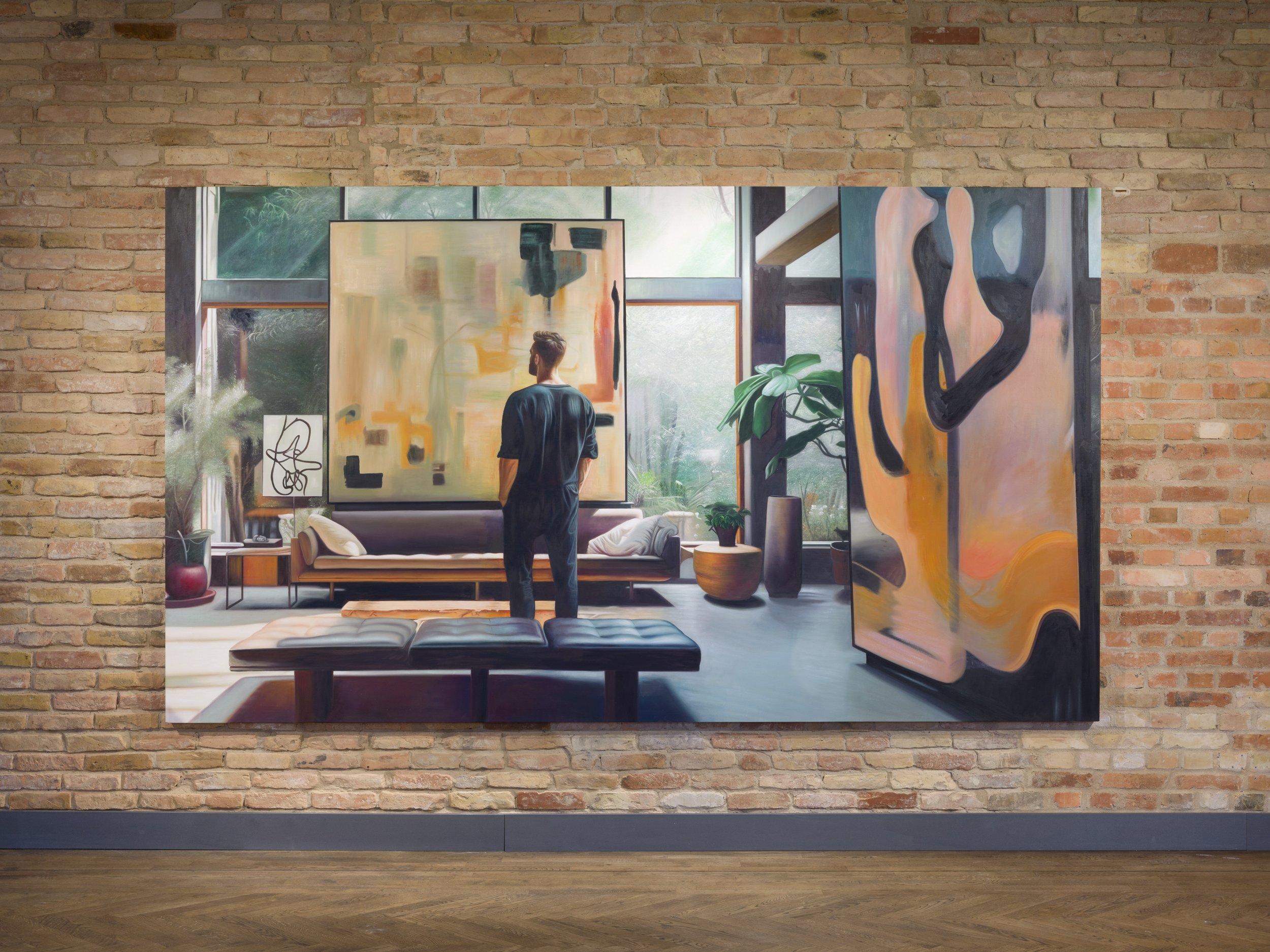
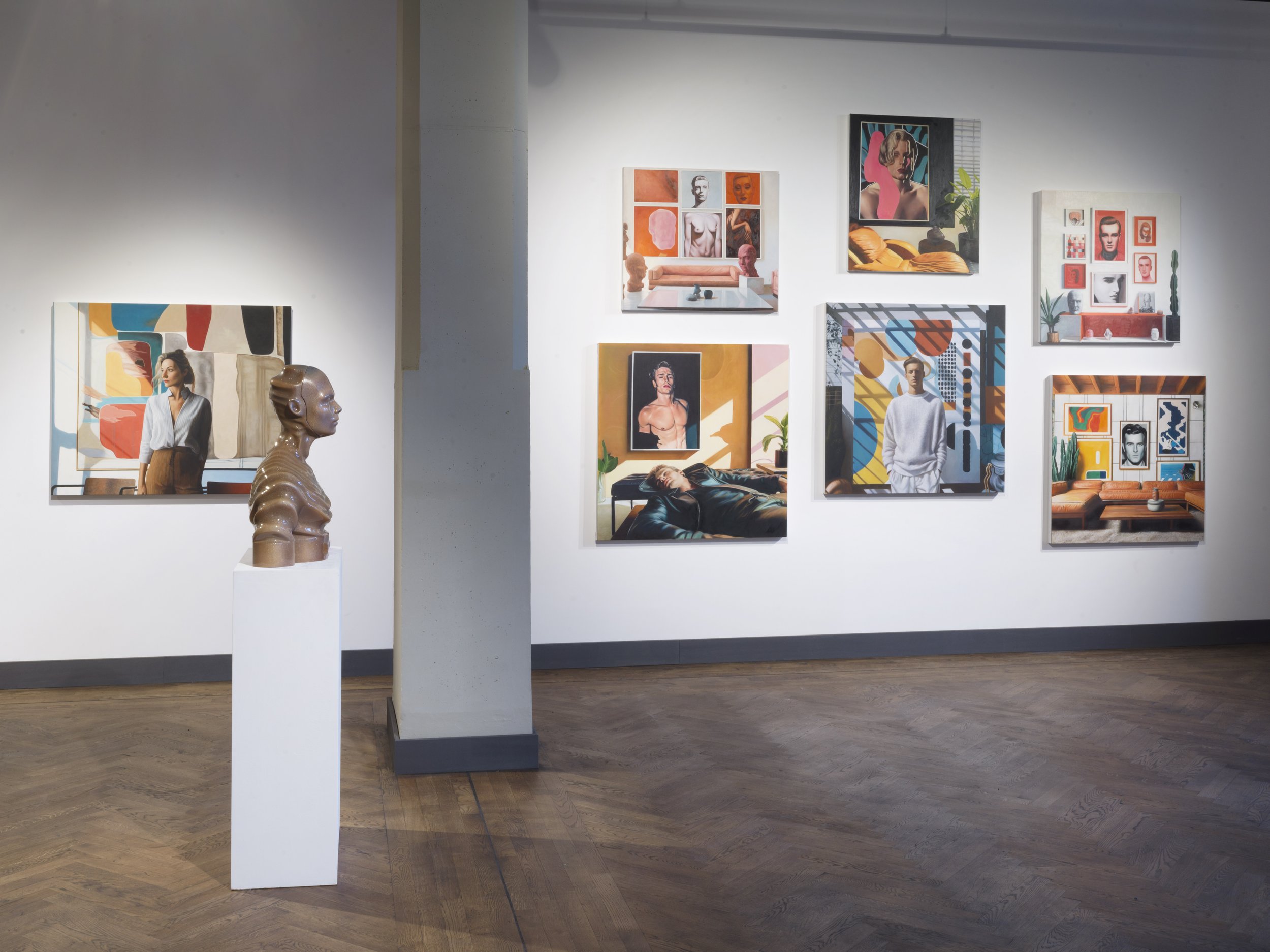


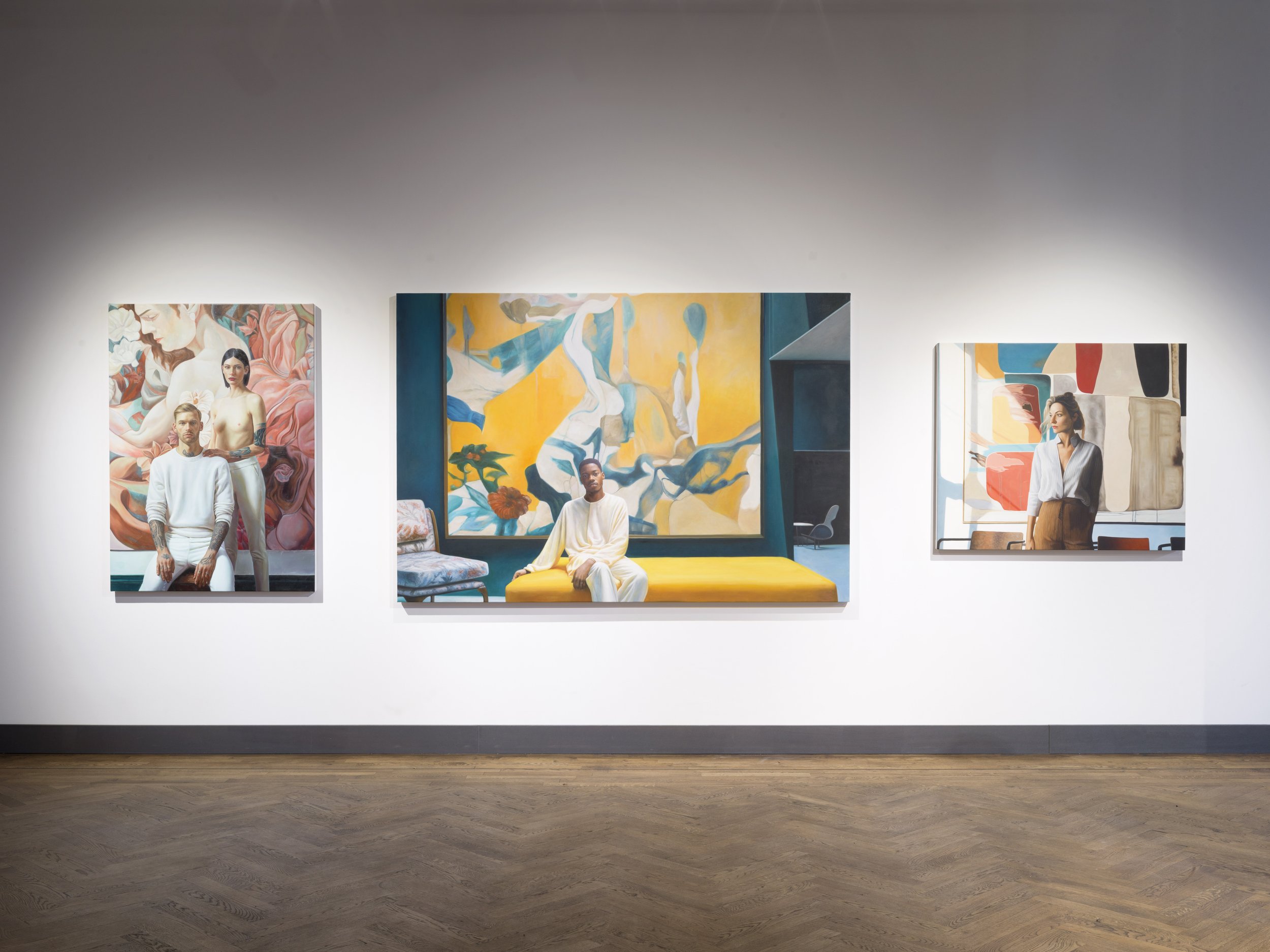
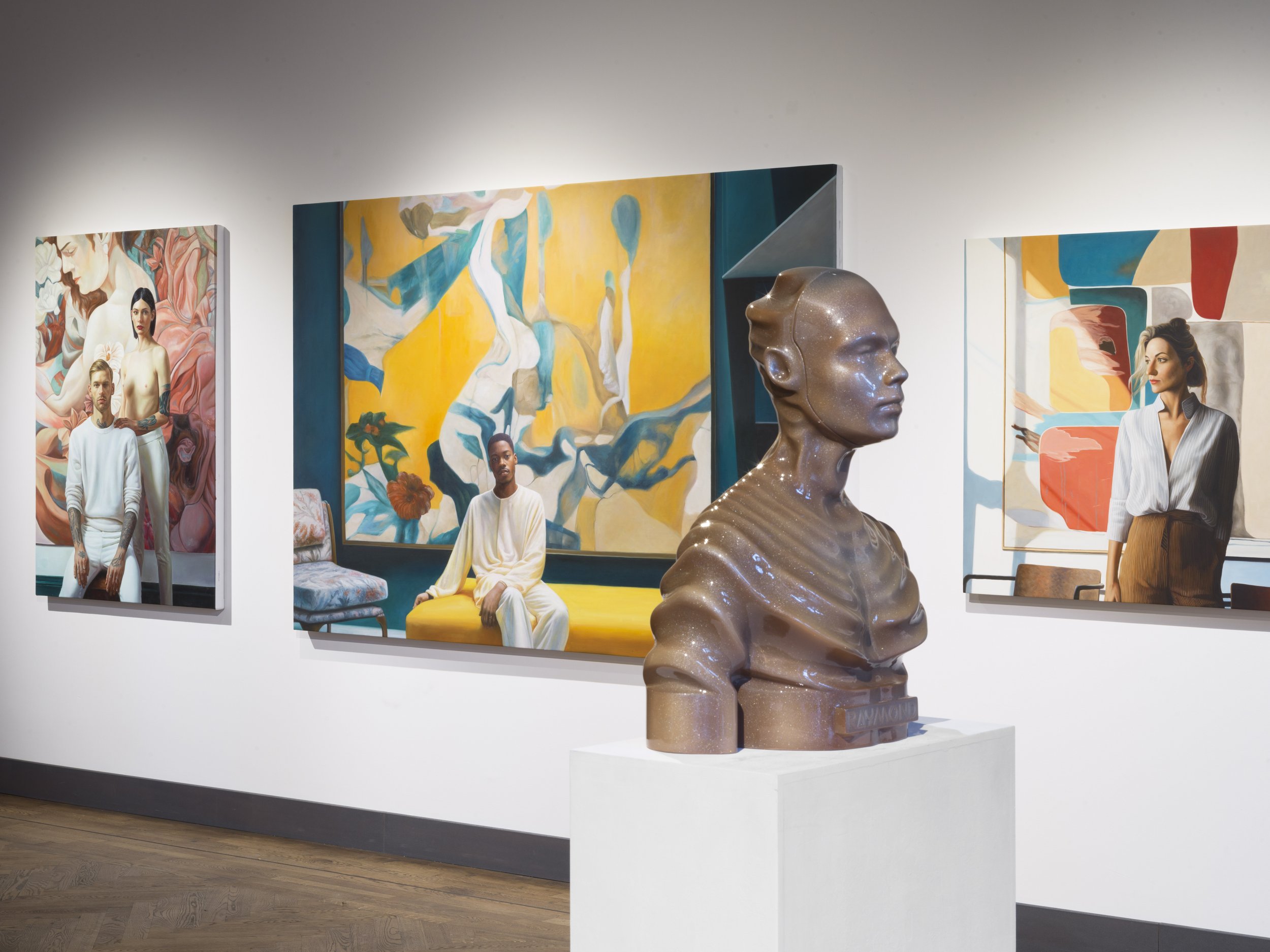
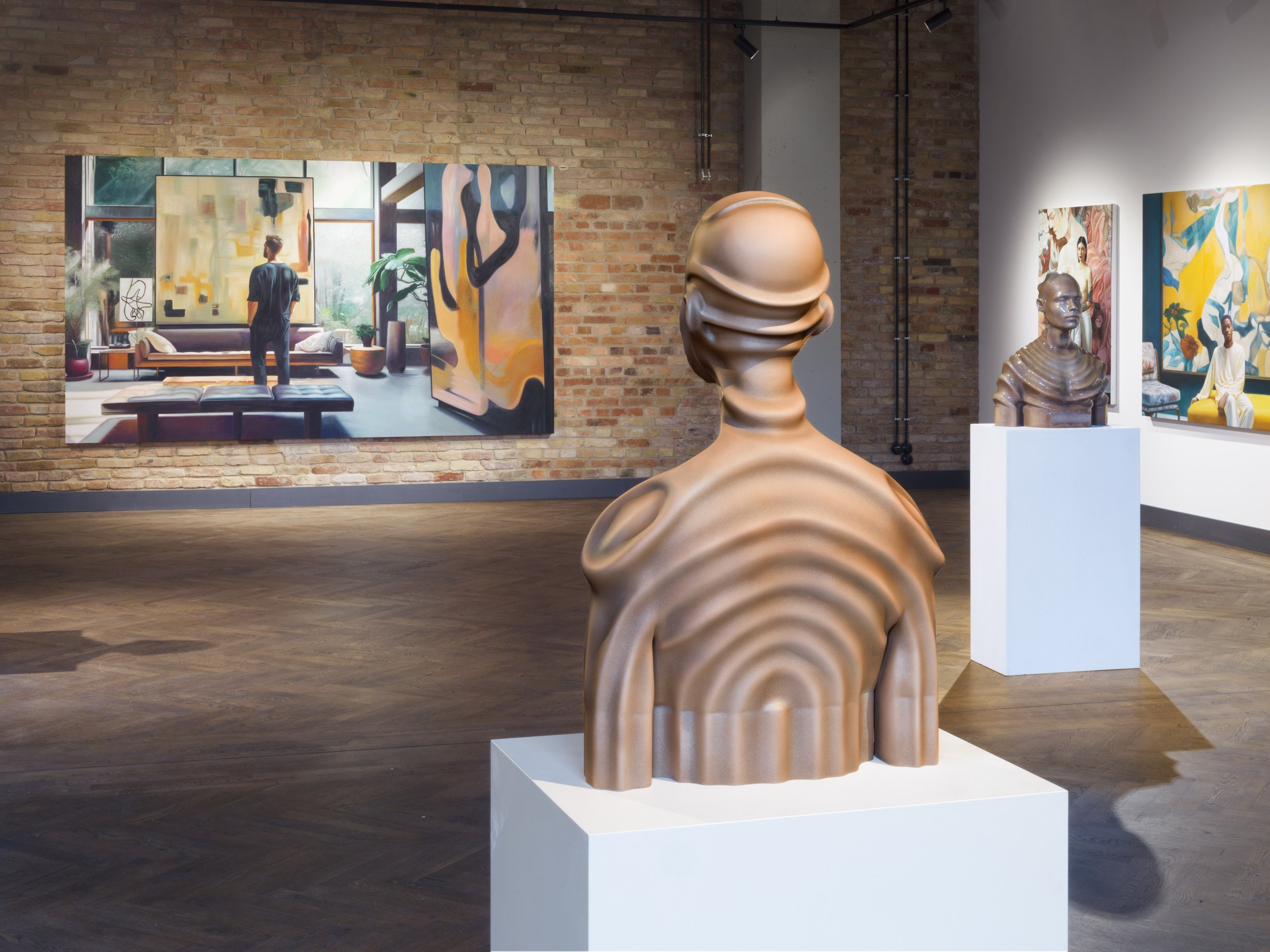
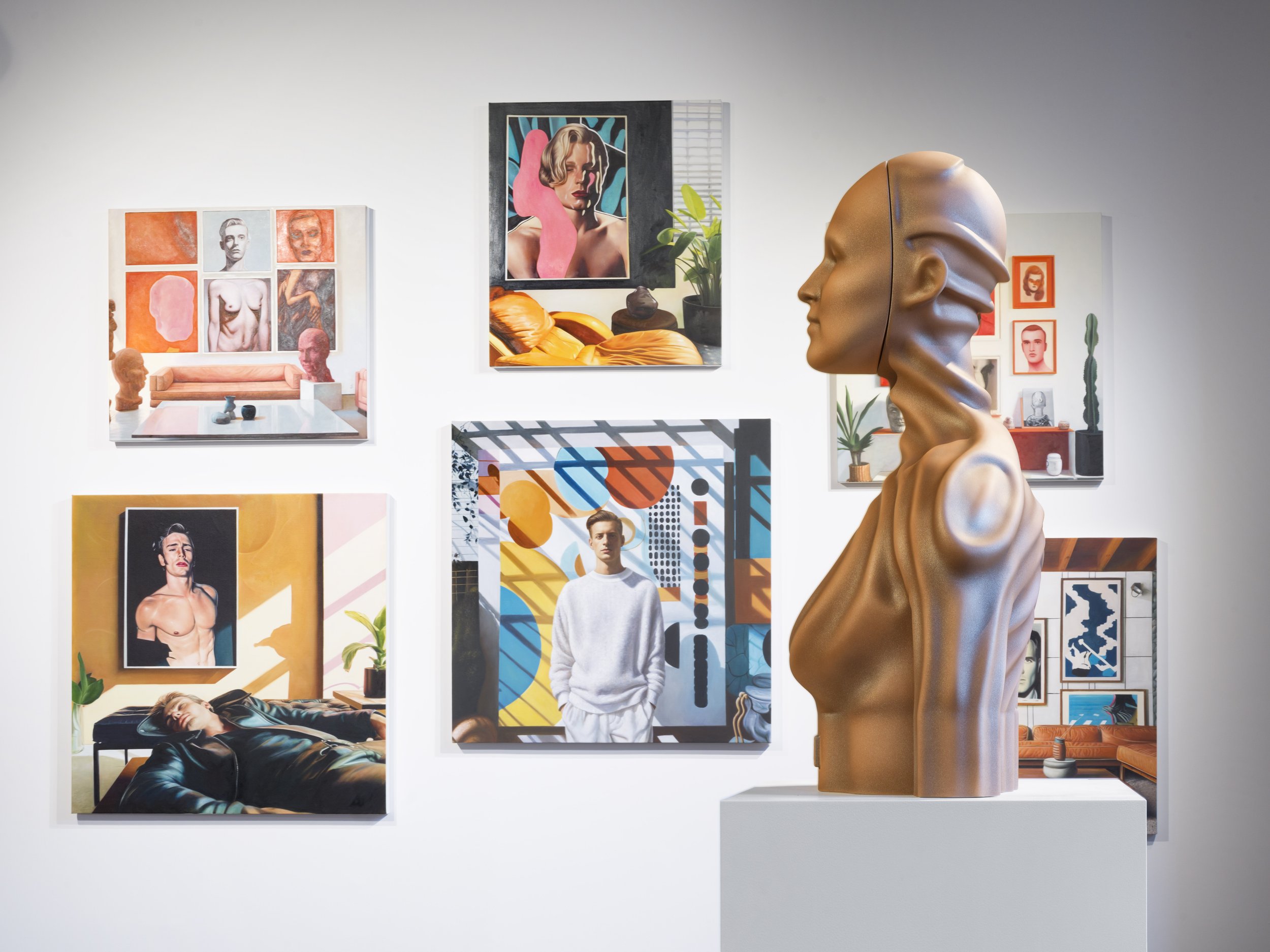
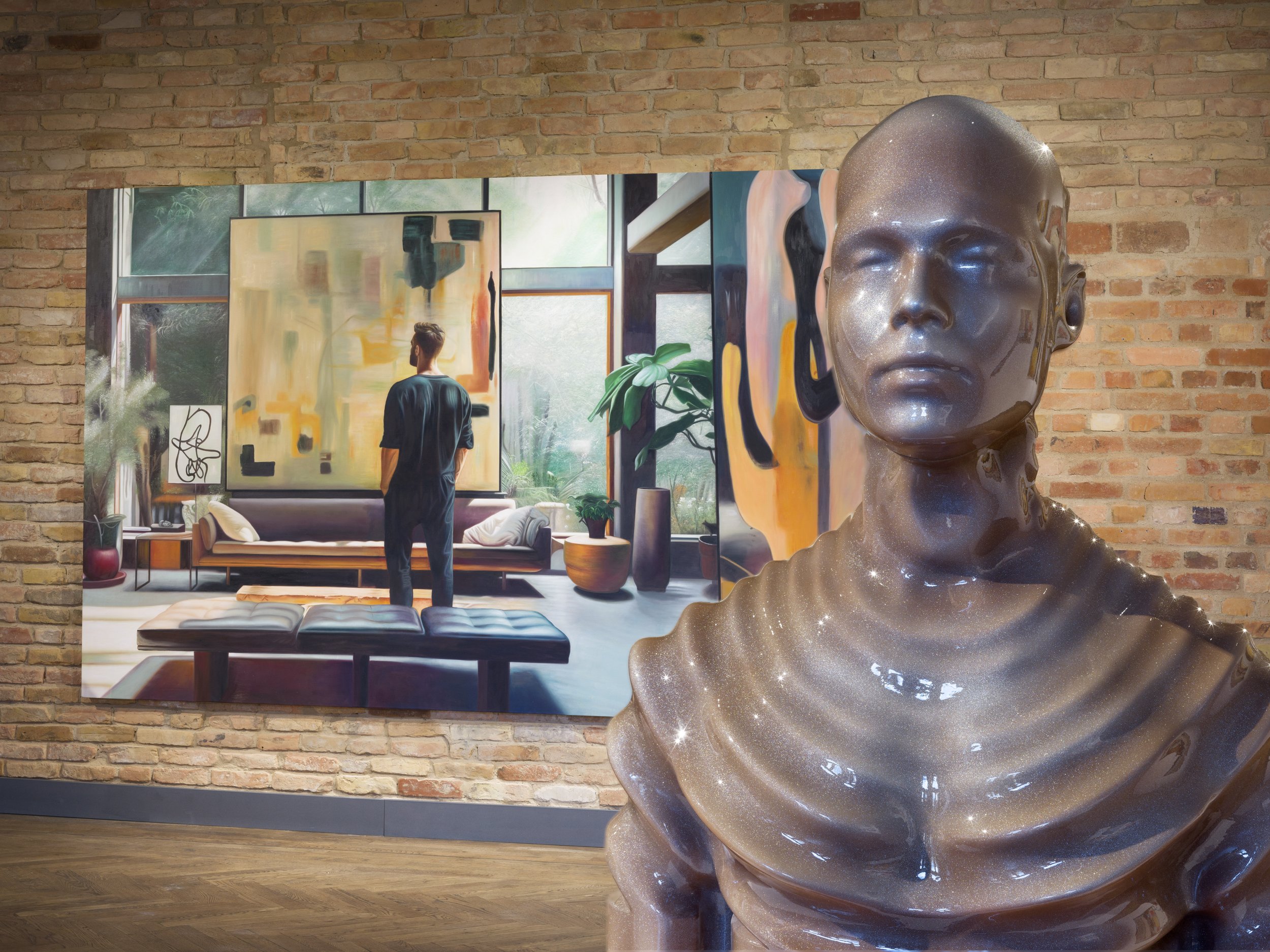
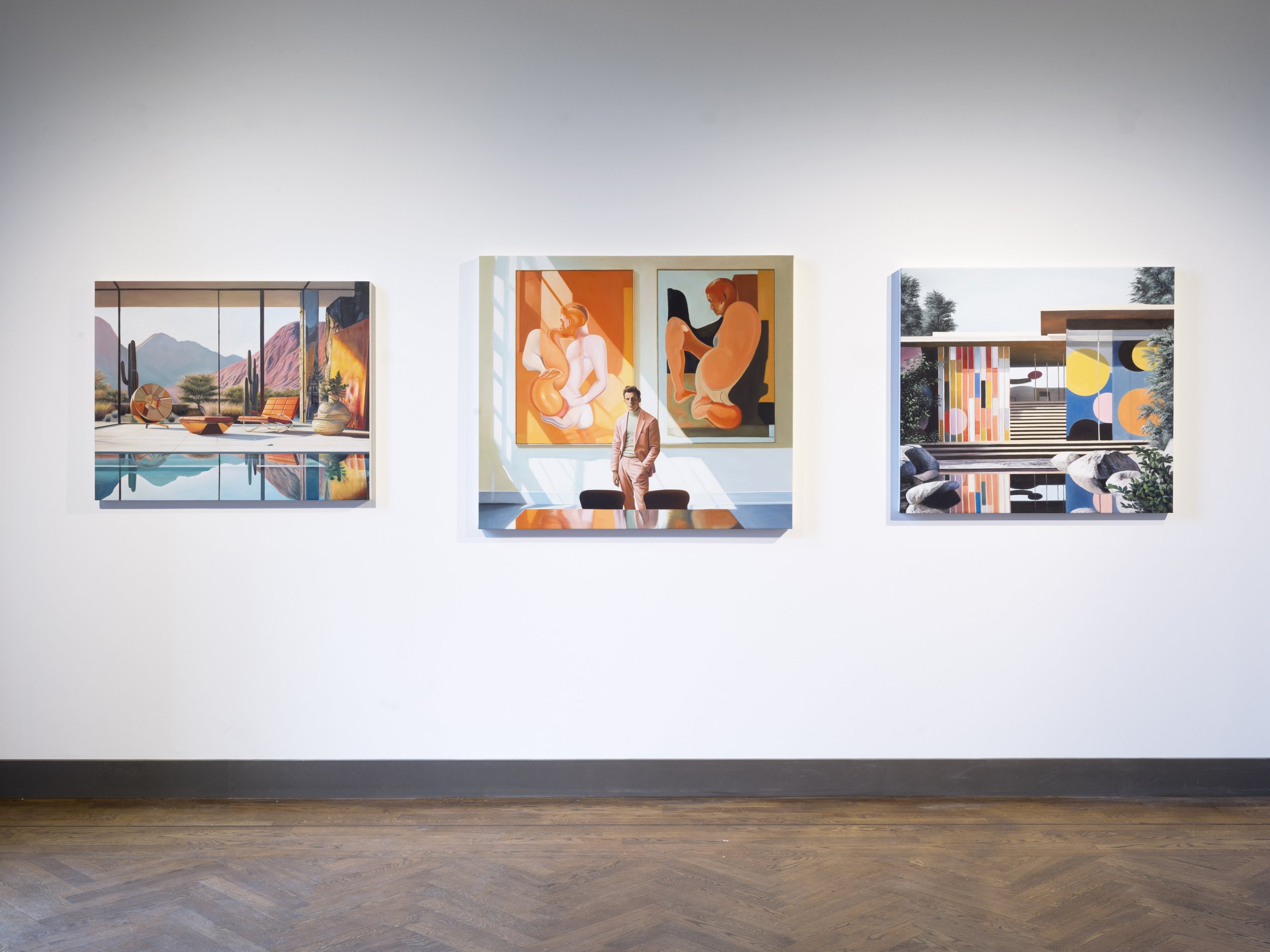
Amir Fattal: Post Artificial Paintings Installation View: KÖNIG TELEGRAPHENAMT, Berlin, 2024. Photo: Courtesy of the artist & KÖNIG GALERIE
In order to focus on the collaboration between artist and AI and create an emotional distance to the finished works, Fattal leaves the actual realization of the oil on canvas AI-generated images to a painting workshop in China. In so doing, Fattal draws attention to the tradition of painting as a medium of copying, employed as such for thousands of years, until the invention of photography. Copying also provides the opportunity to reflect more closely on the social conditions surrounding images, such as the globalization of their modes of production, the artistic value of AI technology, and the role of capitalism more generally.
Amir Fattal: Post Artificial Paintings Installation View: KÖNIG TELEGRAPHENAMT, Berlin, 2024. Photo: Courtesy of the artist & KÖNIG GALERIE
In his project LOVE CHILD, from which three sculptures are included in the exhibition, Fattal combines a new DNA visualization technology with 3D scanning and printing. With this technology, originally developed for forensic science, a person’s facial features can be reconstructed based on data extracted from raw DNA. Fattal goes one step further, though, by combining the DNA of six of his closest friends to create composite facial realizations of how their potential offspring might look. The DNA visualized using the 3D printer is ultimately a combination of the two test subjects in bust form, with their surfaces finished by hand, giving the generated figures a futuristic, yet somehow individualized, look.
Antonio, 2023, Oil on canvas, 150 x 220 cm, Courtesy of the artist & KÖNIG GALERIE



